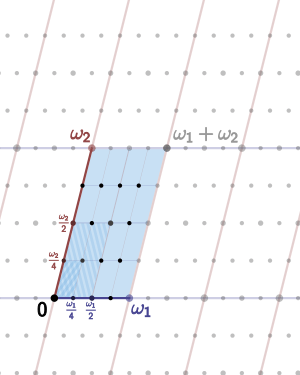Isogeny
In mathematics, an isogeny is a morphism of algebraic groups that is surjective and has a finite kernel.
If the groups are abelian varieties, then any morphism f : A → B of the underlying algebraic varieties which is surjective with finite fibres is automatically an isogeny, provided that f(1A) = 1B. Such an isogeny f then provides a group homomorphism between the groups of k-valued points of A and B, for any field k over which f is defined.
The terms "isogeny" and "isogenous" come from the Greek word ισογενη-ς, meaning "equal in kind or nature". The term "isogeny" was introduced by Weil; before this, the term "isomorphism" was somewhat confusingly used for what is now called an isogeny.
Case of abelian varieties

For abelian varieties, such as elliptic curves, this notion can also be formulated as follows:
Let E1 and E2 be abelian varieties of the same dimension over a field k. An isogeny between E1 and E2 is a dense morphism f : E1 → E2 of varieties that preserves basepoints (i.e. f maps the identity point on E1 to that on E2).
This is equivalent to the above notion, as every dense morphism between two abelian varieties of the same dimension is automatically surjective with finite fibres, and if it preserves identities then it is a homomorphism of groups.
Two abelian varieties E1 and E2 are called isogenous if there is an isogeny E1 → E2. This is an equivalence relation, symmetry being due to the existence of the dual isogeny. As above, every isogeny induces homomorphisms of the groups of the k-valued points of the abelian varieties.
See also
References
- Lang, Serge (1983). Abelian Varieties. Springer Verlag. ISBN 3-540-90875-7.
- Mumford, David (1974). Abelian Varieties. Oxford University Press. ISBN 0-19-560528-4.